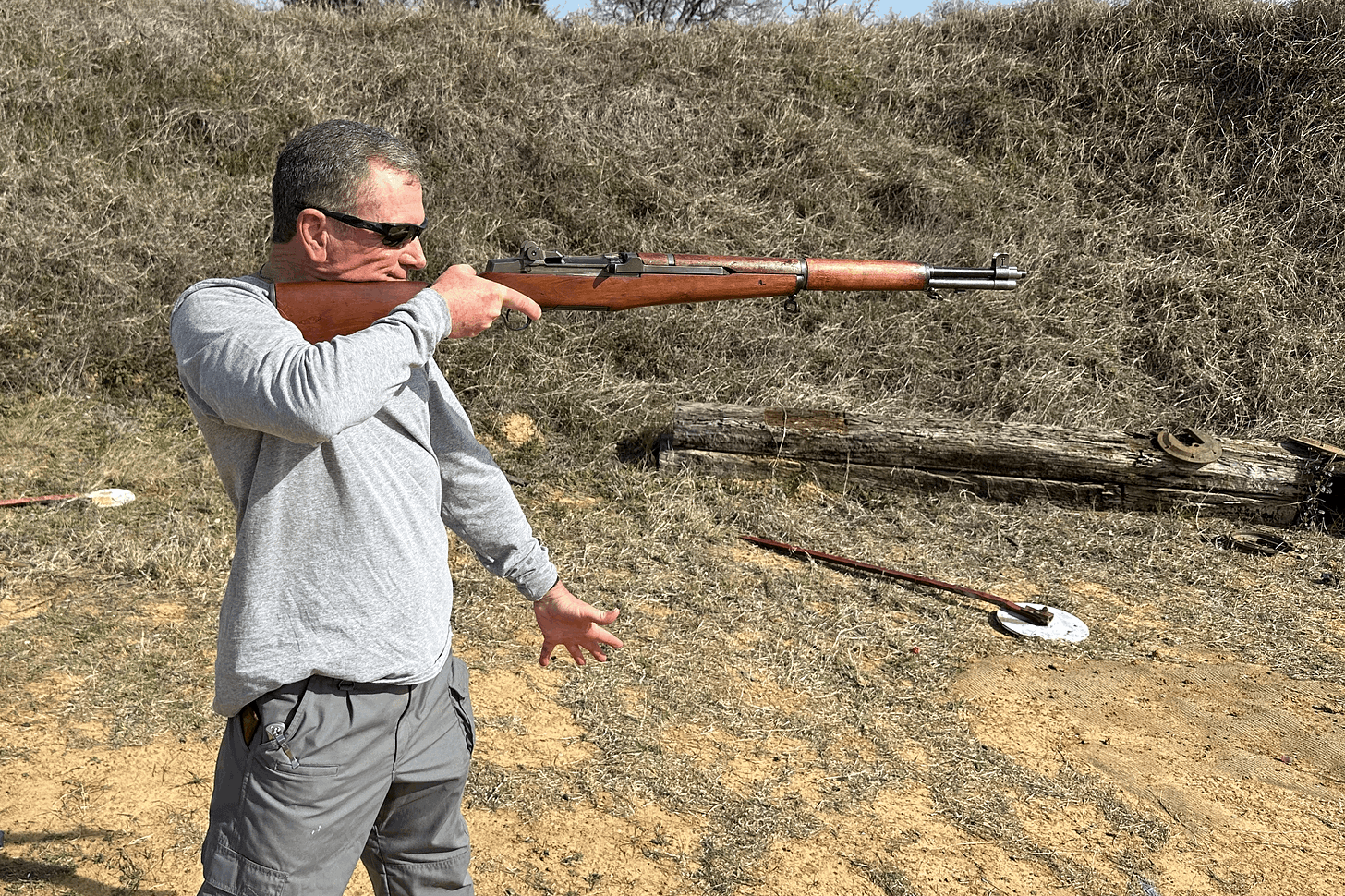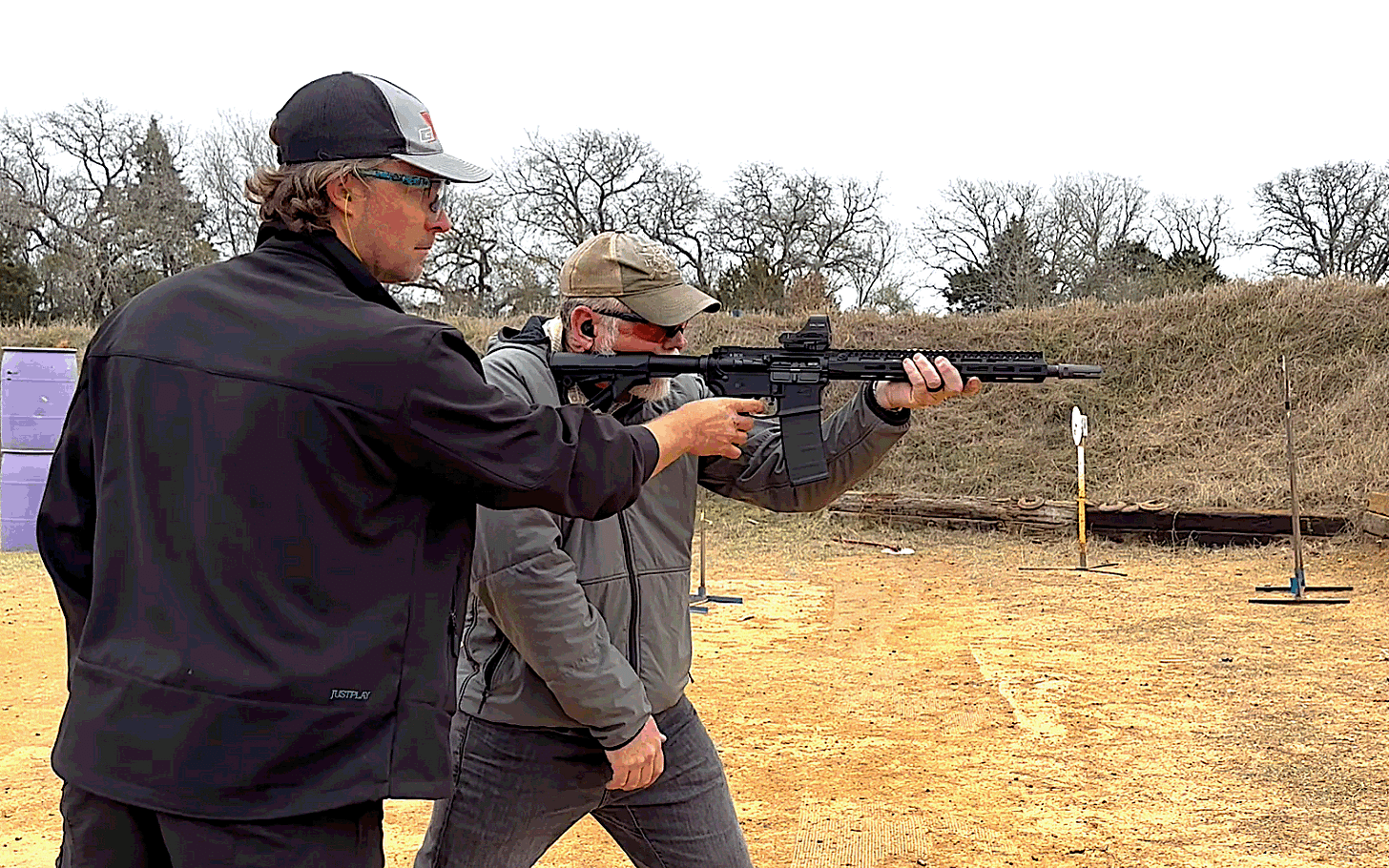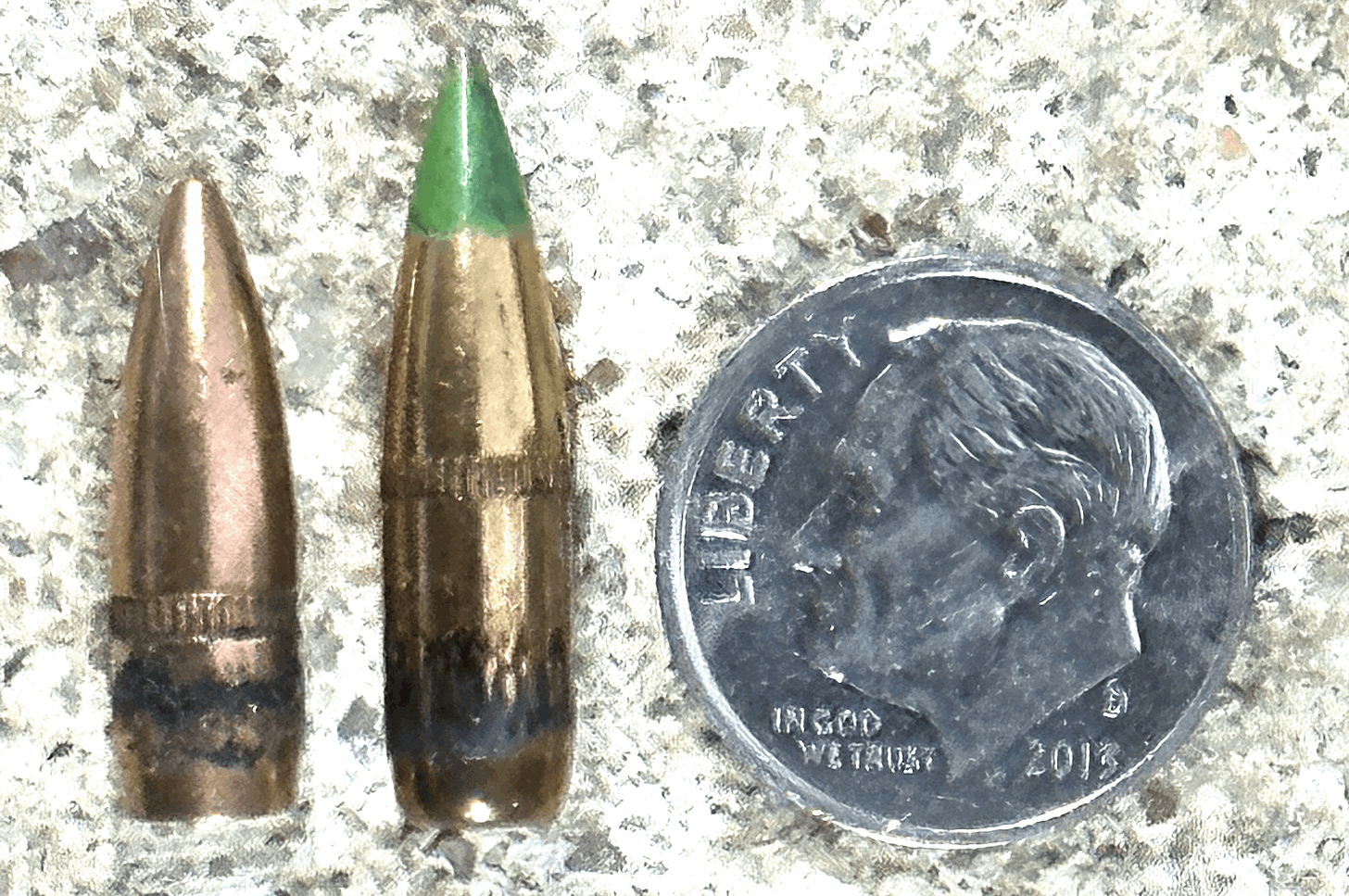Send In The Marines . . . To Federal Court
When an anti-gun activist's arguments absolutely must be destroyed overnight.
Eventually, the Supreme Court may hear one or more challenges to Democrat-state laws that ban rifles Americans most commonly acquire for legitimate purposes, including self- and collective defense. One such case, Rupp v. Bonta, which challenges California’s ban on AR-15s and other firearms of the same type, is moving as we speak, and its immediate outcome may depend on which veterans of the United States Marine Corps the federal judge handling the case believes.
In 2019, Judge Josephine Staton, of the U.S. District Court for the Central District of California (Western Division), denied a motion to overturn California’s ban on summary judgment. Appealed to the historically left-leaning Court of Appeals for the Ninth Circuit, the case has been remanded to Judge Staton for reconsideration in light of the Supreme Court’s ruling, in New York State Rifle & Pistol Association v. Bruen (2022), that firearm-related restrictions are unconstitutional if they’re inconsistent with the nation’s history and tradition, an argument raised by then-Judge (now Supreme Court Justice) Brett Kavanaugh in his dissent in Heller v. District of Columbia (U.S. Court of Appeals for the District of Columbia Circuit, 2011), another “assault weapon” case.
If Judge Staton follows Bruen, she will overturn California’s ban, even if she considers only history and tradition since the introduction of semi-automatic rifles that use detachable ammunition magazines. Such firearms have existed for more than a century. The Remington Model 8, primarily intended for hunting but also used for battle (two were used by law enforcement officers in the famous ambush of Bonnie and Clyde), was introduced in 1905. Americans own countless M1 Carbines, introduced in 1942.
The most commonly owned rifle of the type today, the AR-15, was introduced in 1963. But California, the first state to impose a ban, did not do so until 1989, only eight other states have done so since, and these nine states account for only one-third of the U.S. population.
Congress imposed a ban, of a sort, for 10 years (1994-2004), but it was far less restrictive than California’s ban, in that it allowed “banned” firearms to be made in slightly modified form, such as shown below. Six months after the “ban” took effect, in a CBS 60 Minutes segment titled “What Assault Weapons Ban,?” reporter Leslie Stahl noted that “assault weapons are still . . . . sold by the thousands,” and called 1994 “the best year for the sales of assault weapons ever.”
An AR-15 made to comply with the federal “ban” of 1994-2004. More than 738,000 AR-15s were made during the “ban” in this configuration—with a “pistol grip,” a feature anti-gun activists now characterize as a threat to civilization, as global warming activists do fossil fuel.
The ban is even more appropriately doomed if Judge Staton considers, as she should, only the history and tradition of the right to arms at the time of the Second Amendment’s adoption and ratification. If she bears in mind that the amendment was adopted and ratified to guarantee that the people will be armed for defense against tyranny, she will find that rifles like the AR-15 give an American, at most, the same capability, against potential tyrannical enemies armed with rifles today, that an American with a musket had in 1789 and 1791 against tyrannical enemies of the late 18th century.
However, Bruen, in determining whether New York’s concealed handgun license law was consistent with the history and tradition of the right to arms, did not look at only the period immediately preceding and ending with the Second Amendment’s ratification. It also unnecessarily looked at how the amendment was interpreted in the 19th century. As Justice Amy Coney Barrett delicately put it in her concurring opinion in the case, Bruen did not “conclusively determine the manner and circumstances in which postratification practice may bear upon on the original meaning of the Constitution.”
California’s ban will also fail if Judge Staton follows the guidance of the Supreme Court in two other relevant cases. In U.S. v. Miller (1939), the Court indicated that the right to keep and bear arms includes weapons that can be used to “contribute to the common defense” and even those that are “ordinary military equipment,” which “assault weapons” are indisputably not.
And in District of Columbia v. Heller (2008), the Court opined that Miller also recognized the right to “weapons . . . in common use.” The National Shooting Sports Foundation, which has the best data on this sort of thing, estimates that since 1990 alone, Americans have acquired 24,446,000 AR-15s and other semi-automatic rifles that use detachable ammunition magazines and are otherwise of the same style and configuration.
However, as David Kopel, of the Independence Institute and Cato Institute, pointed out recently, the U.S. Courts of Appeals for the First, Second, Fourth, Seventh, and District of Columbia circuits have ignored or mischaracterized those Supreme Court decisions, and upheld “assault weapon” bans on the basis of anti-gun activists’ false characterizations of the guns’ rates of fire and power.
Supporters of California’s ban are hoping for the same result when Judge Staton reconsiders Rupp. To that end, California enlisted retired Marine Corps Col. Craig Tucker, who’s associated with Michael Bloomberg’s anti-gun activist group, Everytown, to provide testimony, in which he contends that AR-15s are almost identical to M16 and M4 rifles used by the military for defensive purposes, but, despite this similarity, not useful for defensive purposes in the hands of the American people.
I critiqued Tucker’s testimony here. But upon further consideration, something about Tucker doesn’t add up. It’s not only that in 2005, he was reportedly relieved of command on account of an inappropriate relationship with a military subordinate. Or that he’s associated with Michael Bloomberg’s group. It’s also that while he claimed combat experience, he made misstatements about rifles and related equipment I would not expect from anyone who had made it through Basic Training.
He claimed to have carried an M4 in Iraq. But he said the rifle is designed to use .223 Remington ammunition, when it’s instead designed to use 5.56x45mm ammunition. He claimed that a standard combat load in the military is 120 rounds and four magazines, when, for decades, it has been 210 rounds and seven magazines. He claimed that an M4 has a “folding stock,” when it instead has a telescoping stock, the length of which can be adjusted to the physique of the user.
Tucker also implied that the M4 is used by only helicopter, tank, and Bradley Fighting Vehicle crews, when it’s instead the standard-issue rifle for the entire U.S. Army. He made several nonsensical claims that the M4’s grip, which an AR-15 also has, improves marksmanship, but his resume includes no marksmanship instructor certifications. And in a second filing with the court, he insulted and disparaged the testimony of Buford Boone, who for 15 years served as the Supervisory Special Agent of the FBI’s Ballistic Research Facility, and whose resume otherwise underscores his reputation as a world-class expert in his field. Tucker might as well have lectured Dr. Ben Carson on the finer points of pediatric surgery.
So, I spoke to two Marine Corps veteran friends of many years, of whose experience I’m certain, and one of them introduced me to another Marine whose credentials are also unassailable. As it turns out, one of them served with Tucker. Their assessment of Tucker’s claims are included below. The three are:
Chief Warrant Officer 5 Jeffrey L. Eby – 28 years in the Marines, 11 as a Marine Gunner. Combat veteran in Iraq. Served with Col. Tucker in 2nd Battalion, 7th Marines from 1999-2000 and in 7th Marine Regiment from 2003-2005 as Tucker’s Infantry Weapons Officer, to advise on the capabilities, limitations, employment, and all associated training to prepare Marines for war. As the Officer-in-Charge of the USMC Small Arms Instructor Course, led the team that developed the USMC Combat Marksmanship Program, focused on individual weapons such as the M4 carbine and M9 pistol.
Chief Warrant Officer 5 Mike Musselman – Infantryman for 25 years of his 30 years with the Corps. Marine Gunner and Infantry Weapons Officer. Three combat deployments to Iraq, one to Afghanistan.
CWO5 Musselman (third from left) and CWO5 Eby (fourth from left) in Sadr City, Iraq, after 57 days of continuous combat.
Staff Sergeant Jack Leuba – Infantry Rifleman and Unit Leader, Marksmanship and Small Arms Weapons Instructor, combat veteran in Iraq and Afghanistan, Staff Non-Commissioned Officer-in-Charge and Chief Instructor, USMC Small Arms Weapons Instructor School. Leuba played a key role on CWO5 Eby’s team that developed the curriculum of the USMC Combat Marksmanship Program.
SSgt Leuba (R)
These Marines’ responses to Tucker’s claims are below.
Rate of Fire
By way of background, in 1989, when “assault weapon” legislation was introduced in California and in Congress, the fake news media began trying to trick the American people into thinking that AR-15s and the like were machine guns, like those used by the military.
This video shows CBS, in 1989, broadcasting footage of government personnel firing government machine guns while reporter Dan Rather talked about legislation to ban semi-automatic rifles, followed by NBC and Matt Lauer doing the same thing in 1993, just before the Senate voted on “assault weapon” legislation introduced by Dianne Feinstein (D-Calif.), and NBC doing so again in 1994, before the House of Representatives voted on the same legislation.
In 2003, after more than a decade of complaints about the media’s machine gun lie, the anti-gun activist group Violence Policy Center tried to help then-Rep. Carolyn McCarthy (D-N.Y.) push “assault weapon” legislation by claiming the fact that semi-automatic rifles cannot fire fully-automatically is “a distinction without a difference,” and that semi-automatic rifles are more useful than automatic rifles in combat. As if on cue:
Tucker: “The only difference (between an AR-15 and a military M4) is the AR-15 cannot fire on full-auto,” “a picayune difference,” and “semiautomatic rifles (are) more lethal and most useful in combat settings.”
CWO5 Musselman – “The difference between semi-automatics and fully-automatics is significant and often decisive. The primary small arm for maintaining fire superiority over the enemy is not the M16 or M4, it is the belt-fed, fully-automatic machine gun, such as the M240. The military is replacing the M16 and M4 with rifles of a newer design, and the newer rifles most definitely are capable of fully-automatic fire.”
Note: The military doesn’t use AR-15s or other rifles California considers an “assault weapon.”
Curiously, by making the point that AR-15s are the semi-automatic-only variants of the M16/M4, thus well-suited to what Miller termed “the common defense,” Tucker unintentionally explained why they are quintessentially a type of firearm that the Second Amendment protects the right to keep and bear, thus why California may not ban them.
Tucker: “Changing (30-round) magazines during intense combat is the most important individual skill taught to Marines.”
SSgt Leuba – “False. The most important rifle skill taught to Marines is hitting the target. The USMC Combat Marksmanship Program allocates hundreds of hours of training specific to that, with barely a handful allocated to tasks such as reloading.”
Tucker: “[T]he pistol grip allows the rifleman to pull the rifle into her (sic) shoulder with each shot” and “functions as a hand rest to reduce hand/finger fatigue during long combat engagements.”
SSgt Leuba – “To the contrary, hooking the thumb of the firing hand over a traditional stock (see the photo below) provides for less fatigue when keeping the hand near the controls and trigger.”
CWO5 Eby – “Accuracy is not determined by the shape of a rifle’s grip. It’s a function of the fundamentals of marksmanship: Aiming, steadiness and stability of your firing position, breath control, trigger control, and follow through. That is the case with any rifle, however shaped or configured.”
Yours truly, shouldering an M1 one-handed. An M1 weighs much more than an AR-15, is front-heavy, and does not have an AR-15 type “pistol grip,” which Tucker claims is necessary to achieve aim.
Tucker: “Absent any pistol grip, a semi-automatic rifle would be difficult to operate when fired rapidly, as the rifle barrel would seesaw up and down with each shot fired in succession.”
CWO5 Musselman – “No. It’s a matter of physics. When the rifle is fired, it imparts upward movement of the barrel. It’s the forward hand, not the hand on the pistol grip, that controls that impulse.” This video illustrates CWO5 Musselman’s point.
Tucker: “A 30-round fixed magazine can fire more rounds in a given amount of time than three 10-round detachable magazines, which would need to be reloaded to fire the same number of rounds, slowing down the rate of fire.”
Yes, slightly. And that’s a reason that M16s, M4s, AR-15s, and their magazines are quintessentially within the scope of the right to keep and bear arms. It’s also true that the purpose of a 30-round magazine is not only to allow you to fire 30 shots before reloading, but to give you a greater opportunity to reload before the rifle runs out of ammunition. It is worth noting that while anti-gun activists claim that you could not possibly need more than a 10-round magazine for self-defense, in the famous 1986 FBI Miami Shootout, there were two criminals involved, dozens of rounds were fired at them, both were hit multiple times, but both continued to fight. Of course, law enforcement officers do not limit themselves to 10-round magazines.
Power of the bullets
Tucker: “AR-15 and M4 . . . . (ammunition) is capable of severing the upper body from the lower body, or decapitation.”
Not according to an NBC News report in 2008, which stated “M855 rounds continue to be a weak spot in the American arsenal. They are not lethal enough to bring down an enemy decisively, and that puts troops at risk, according to Associated Press interviews. . . . Fired at short range, the M855 round is prone to pass through a body like a needle through fabric.”
SSgt Leuba – “Standard ballistics gelatin tests prove that 5.56x45mm NATO projectiles are not capable of ‘severing the upper body from the lower body, or decapitation.’”
CWO5 Musselman – “In my combat experience, I never saw a 5.56mm projectile cause the damage Col. Tucker claims. After realizing that our standard, 62-grain M855 5.56mm bullets were failing to neutralize the enemy, we switched first to Mk 262 ammunition loaded with a 77-grain bullet, then to Mk 318, with a 62-grain, barrier blind bullet.”
CWO5 Eby – “The Marine Corps abandoned M855, the M16/M4 ammunition used in Afghanistan and Iraq, due in part to its failure to perform against enemy personnel in short-range combat engagements.”
Note: Ammunition for the M4 (and AR-15) is the lowest-powered among the 13 most popular centerfire rifle cartridges in America.
Not surprisingly, the .223 cartridge is the smallest of these cartridges.
L-R, .300 Winchester Magnum, .30-06 Springfield, .270 Winchester, .308 Winchester, .30-30 Winchester, and “enemy decapitating” .223 Remington.
Also, bullets used in 5.56 and .223 cartridges are tiny. They measure .224 inches in diameter and are only slightly heavier than a dime.
Perhaps the most objectionable thrust of Tucker’s testimony is his repeated insistence that AR-15s, magazines that hold more than 10 rounds, and other features common to the rifles are “not needed” for self-defense. For one thing, the Second Amendment is not in the Bill of Needs. But, more practically speaking, American gun owners appear to overwhelmingly disagree with Tucker about the usefulness of AR-15s and 30-round magazines for defensive purposes. And it’s worth noting that the opinion of gun owners was a factor the Supreme Court considered decisive in overturning Washington, D.C’s, handgun ban in Heller.
Something approaching 100 percent of Americans who attend defensive rifle classes do so with AR-15s or other semi-automatic rifles that use detachable ammunition magazines and that have “pistol grips.” The same is true of defensive-skills-based rifle marksmanship competitions. Polls have repeatedly found that Americans acquire guns primarily for defensive purposes, and Annual Firearm Manufacturer and Export Reports published by the Bureau of Alcohol, Tobacco, Firearms and Explosives indicate that Americans acquire several million AR-15s every year, in addition to other firearms that California prohibits as “assault weapons.”
I’ll close with a final observation by SSgt Leuba:
“Tucker’s most egregious errors are his claims that M4s and AR-15s are not useful for individual self-defense. As a graduate of the USMC Close Quarters Battle Course, with significant experience in military operations in urban terrain and enclosed spaces, I can attest that not only is the M4 (and, therefore, an AR-15) a suitable firearm for use in compressed spaces, it is preferred. It gives a defender—military or private citizen—a greater ability to end a threat at close-range, without endangering others in close proximity.”
Copyright © Mark Overstreet 2023











